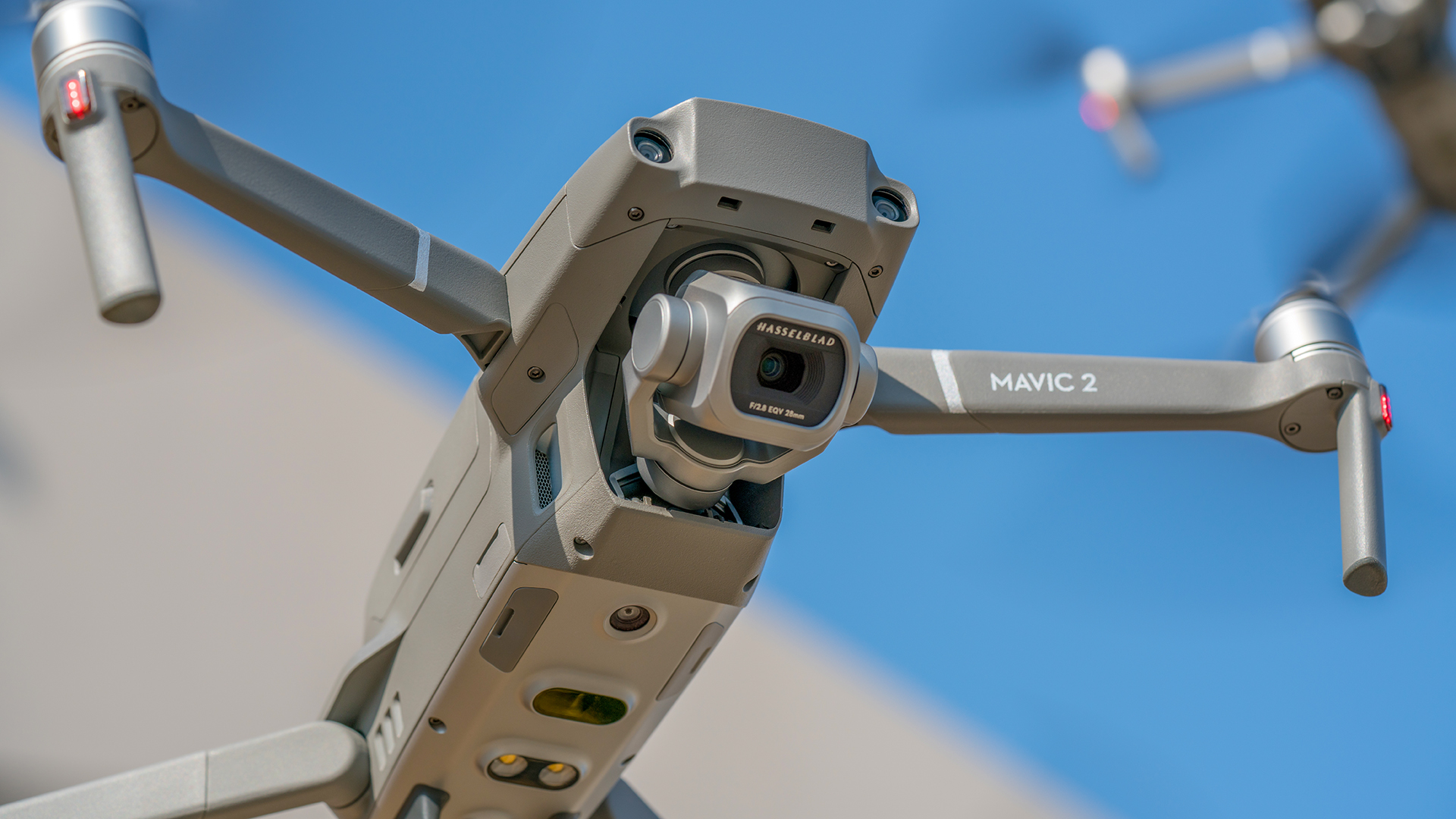
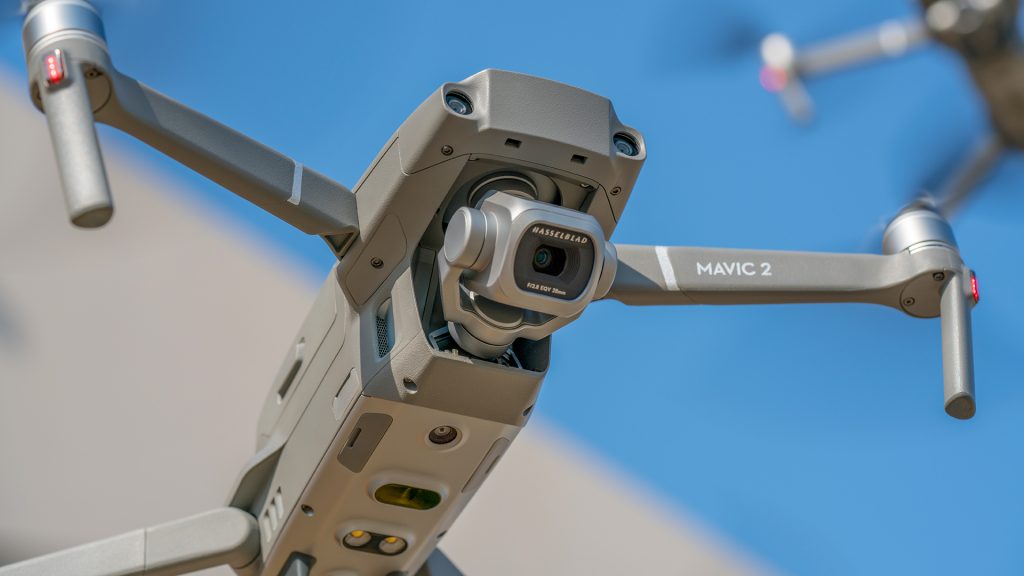
After months of waiting, being teased with the release of the Mavic Pro Platinum and Mavic Air (my favorite bang-for-your-buck drone) and leaked print ads, the day is finally here. The DJI Mavic 2 has launched, giving fans some of the sweet satisfaction that has been long overdue since the Mavic Pro buzz cooled off back in 2016, and a new life to photography drones.
It’s hard to believe only two years has passed since the first collapsible photography drone from DJI landed, its angular grey body with foldable arms looking like anything but a typical DJI drone at the time. Yet here we are, and while they first set the trend a deluge of copycats has followed suit, and their own Mavic spinoffs have expanded the line in their own way: but not like this. As I carefully cut open the pre-production box I’m surprised to see not one, but two Mavic 2’s staring back at me. Could this be a mistake? Nope, DJI didn’t launch just one model, they released two brand-new versions: the Mavic 2 Pro, and Mavic 2 Zoom.
What We Loved About the Mavic Pro
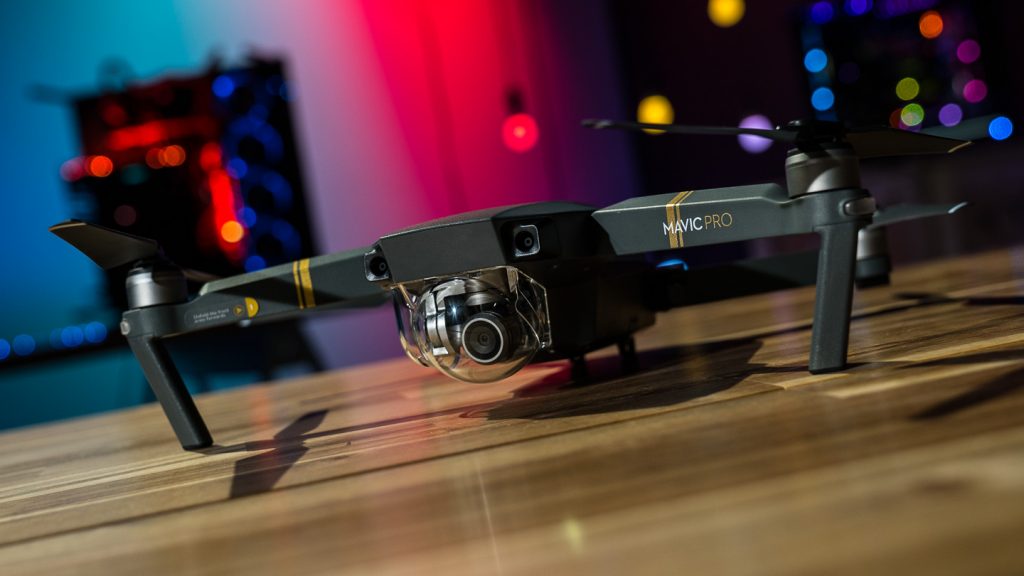
Things get a little confusing talking about the new Mavic 2, especially when you try to weigh which is better, the original Mavic Pro, Mavic 2 Pro, or Mavic 2 Zoom— quite a mouthful. The Mavic Pro was hailed as revolutionary due in large part to the folding arms that collapsed the unit down to the size of a large water bottle and the ultra-compact remote which redefined the drone piloting experience and made it more of an adventure-seeker’s companion for capturing great footage on the go.
While this drone changed the shape of the landscape, it wasn’t the photographer’s dream that the Phantom 4 (namely the Advanced and Pro) started, which started the chanting for an upgraded version of the Mavic optics. For starters, the Mavic Pro only recorded 4K at 30fps, it had a 1/2.3” sensor and was limited to a 60 Mbps bitrate. Not basic quality by any means, but slightly less palatable once the high-quality specs are out of the bag. With the new release from the Mavic 2 Pro and Mavic 2 Zoom, there is something to appease the appetite of the hungry fans.
What Are the DJI Mavic 2 Pro Camera Specs?
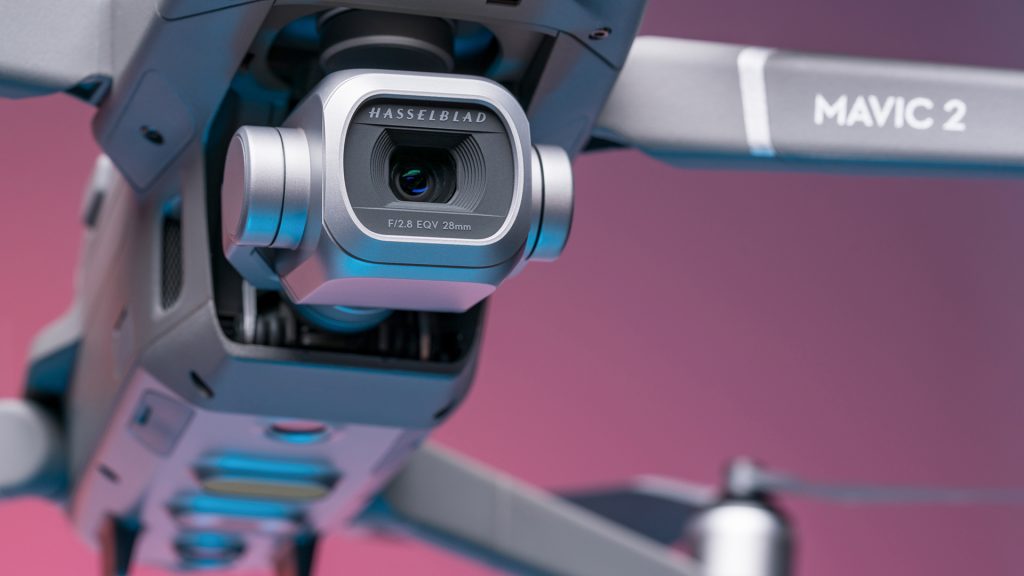
The DJI Mavic 2 Pro ($1,449) is the premium model out of the two and bears the “Pro” badge for a very good reason. The most noticeable feature at first glance is the giant Hasselblad L1D-20C camera planted on the 3-axis mechanical gimbal. This comes packing a 1” CMOS sensor with 20 million effective pixels, which is what has kept the Phantom 4 Advanced and Pro in the running for top video quality of DJI drones, even with the release of newer collapsible models.
This is the big jump that fans have been waiting for: a collapsible drone from DJI with a 1” sensor and all the latest intelligent flight features (collective sigh of relief from the DJI fans). From what we know, the entire camera (sensor, lens, and so forth) is all created by Hasselblad, so this is a pretty big deal in the drone world.
That beautiful square camera enclosure houses a 77° FOV, 28mm lens (format equivalent to 35mm) with an aperture from f/2.8-f/11. The Hasselblad optics have an ISO range from 100-12800 in Manual mode (100-3200 in Auto), and an electronic shutter speed of 8-1/8000s. The still image size produced is a whopping 5472×3648 pixels, with a Dlog-M (10bit) and (HLG 10bit) color mode support for HDR video.
The DJI and Hasselblad Partnership
Previous optics elements like sensors from DJI drones were from Panasonic and Sony, but the brand behind the cameras from the Phantom 4 onward has been “hush-hush”. Some still think Sony is the name behind these elements, which wouldn’t be a stretch considering how much emphasis the company puts on ultra-high quality with depth and clarity beyond all others. In 2015 DJI took it another step further when they acquired a minority stake in camera manufacturer Hasselblad (which was rumored to increase to a majority interest in 2017).
If you don’t recognize the name, Hasselblad is an uber high-end Swedish company popular for medium format cameras, which are far beyond what most photography enthusiasts have ever heard of or can afford. We’re talking about $9,000 mirrorless digital cameras like their X1D or their $33,000 H6D DSLR, which are produced in limited small batches. They have been around since 1941 and the company has a history of quality and boldness, having provided the 12 cameras that recorded the Apollo moon landing in 1969.
While some believe that previous drones used Hasselblad optics, this is the first outward product collaboration between the two companies and shows the serious muscle DJI puts into their photographic quality.
What Are the DJI Mavic 2 Zoom Specs?
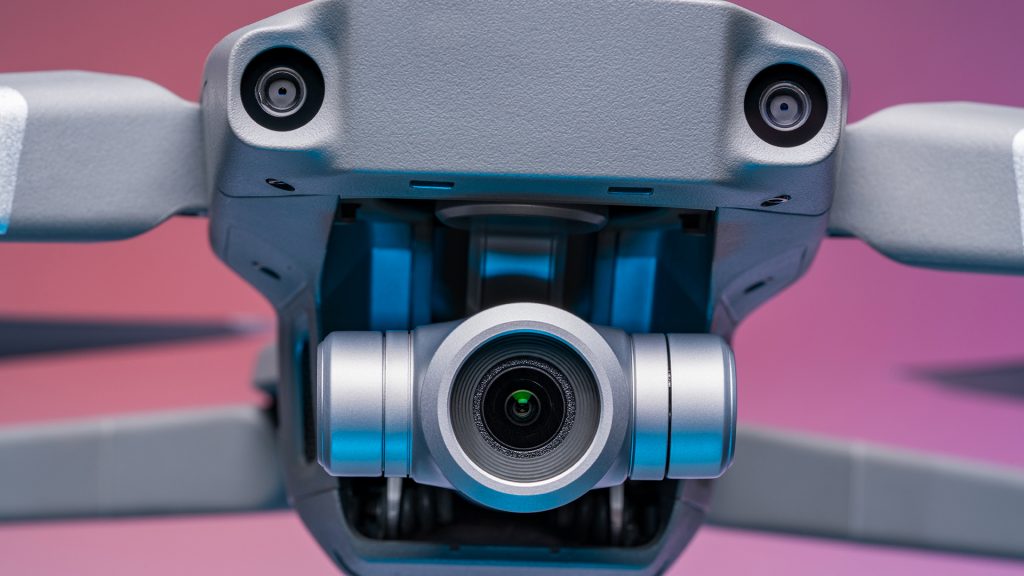 If $1,449 is a bit out of your price range, or having a 20MP camera and 1” sensor don’t get you fired up about the new drone launch, don’t sweat it. DJI also has pumped out another variation of the Mavic 2 with the Mavic 2 Zoom, at $1,249. Now while it may lack the heft of the sensor, the Zoom is a very capable little brother to the Pro, albeit with a few differences to the photographic specs.
If $1,449 is a bit out of your price range, or having a 20MP camera and 1” sensor don’t get you fired up about the new drone launch, don’t sweat it. DJI also has pumped out another variation of the Mavic 2 with the Mavic 2 Zoom, at $1,249. Now while it may lack the heft of the sensor, the Zoom is a very capable little brother to the Pro, albeit with a few differences to the photographic specs.
In lieu of the larger sensor, the Zoom has the 1/2.3” CMOS sensor that was featured on the Air and Pro before it with 12 million effective pixels. While the sensor is smaller the FOV is wider: 83° (at 24mm), and 48° (at 48mm), which is to say that the Zoom has a real adjustable focal length, not just digital zoom. The Mavic 2 Zoom has a 2x optical zoom, which is a first for the DJI drones under the Inspire and Matrice lineup. In addition to the optical zoom, the Mavic 2 Zoom also has a 4x lossless zoom, which is designed to deliver digital zoom without a loss in video quality. There is also a Dolly Zoom function, which is designed to give the impression of a zoom action with movement.
The aperture stops on the DJI Mavic 2 Zoom are from f/2.8 (24mm)-f/11 (48mm), with an ISO range from 100-3200 in Manual (100-1600 in Auto), an electronic shutter speed of 8-1/8000s, and a still image size of 4000×3000 pixels.
Since the Pro optics (and potentially previous cameras) come from the Hasselblad production line, it could be assumed that the Zoom also shares the same port of origin, although this has not been confirmed at the time of writing.
The Mavic 2 Footage Throwdown
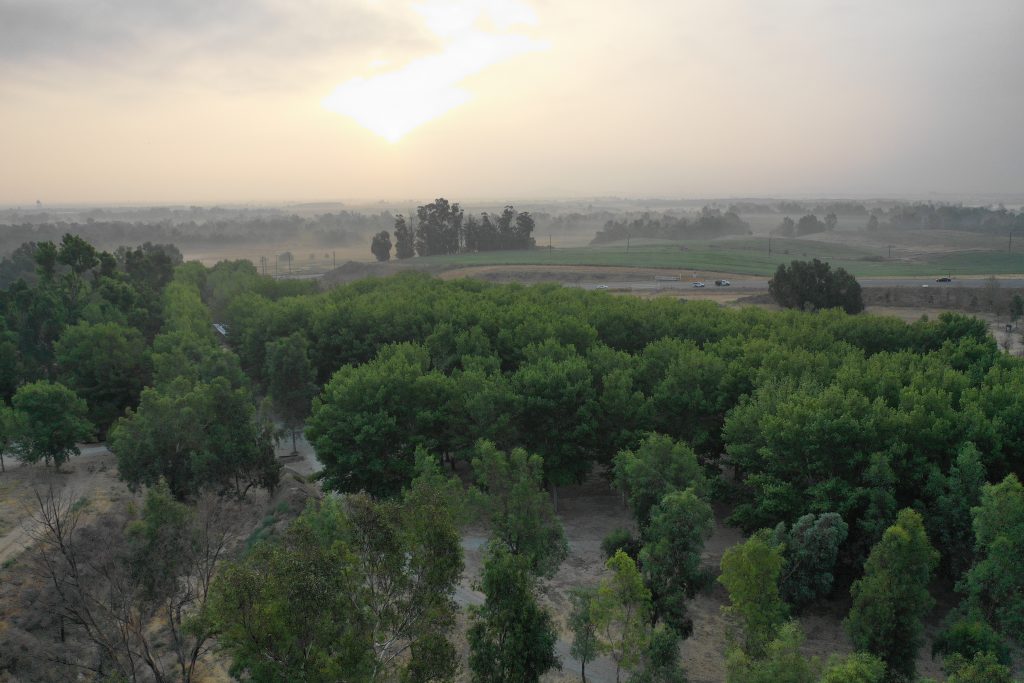
The optics on the Mavic 2 Pro out of the box are extremely impressive, and without any modifications to the settings the still photos are brilliant. The depth and dynamic range in the shadowed areas of under the trees showed clear, and the detail in the canopy of the treetops is clear while capturing the subtle effects of the morning mist in the distance. With some modifications that are all available in the DJI GO 4 app, pilots can capture some absolutely phenomenal footage.
I’m no photographer, and I did not tweak the settings to optimize the composition of the photo above or videos below, however I think that these are quite impressive if I do say so myself. DJI has a bunch of ultra-epic imagery they have shot with these bad boys here, but those have been processed
Below is a quick video of the 4K footage of the Mavic 2 Pro at 30fps.
And here we have the DJI Mavic 2 Zoom in a quick parking lot fly-around, also in 4K at 30fps.
The DJI Mavic 2 Platform
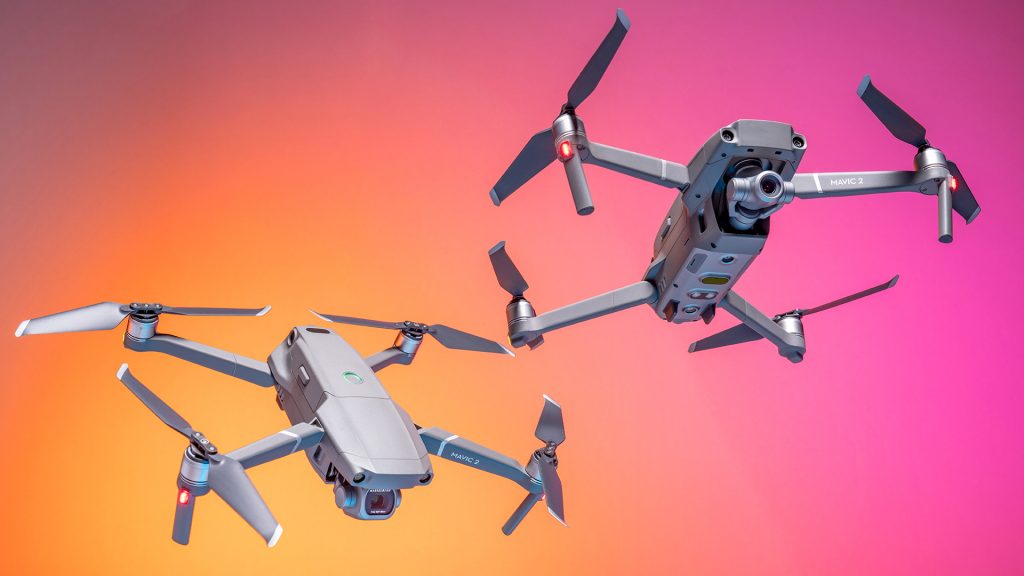
While the photography hardware on both models of the Mavic 2 are far apart, that is actually where the differences end. Literally, the body and all components other than the camera (perhaps there is some effort to balance the gimbal to account of the heavier weight of the Pro camera) are identical in form and function.
That isn’t by any means to tarnish the accomplishments of the Mavic 2 platform, and with the new drones both can shoot 4K @30fps, 2.7K @60fps, and 1080p @120fps, and shoot JPEG or RAW stills with MP4/MOV video.
All the Intelligent Flight Modes from previous models are sticking around for the Mavic 2 launch, with the addition of HyperLapse which allows for aerial time-lapse videos of the environment while keeping one stationary subject in-frame.
Additionally, both models now have a max bitrate of 100Mbps, which was something the Mavic Air had as an upgrade to the Mavic Pro which means that the camera is recording more information to get the maximum detail and clearest picture.
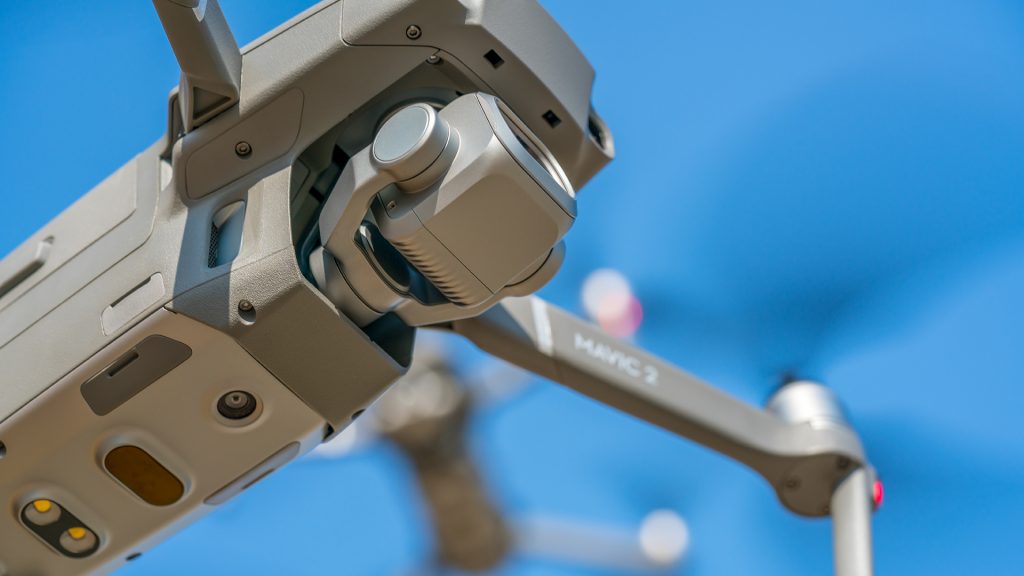
Switching gears and moving to the performance element, the max speed of both drones is 44.7mph, which is a bump up from 40mph that the original Mavic Pro had. The flight time tops out at 31 minutes, which squeaks out one additional minute over the Mavic Pro Platinum and the maximum transmission distance is 4.97 miles with operation on 2.4 & 5.3 GHz frequencies.
One of the cool things about the increase in range with the Mavic 2 models is that those 4.97 miles will be using DJI’s OcuSync video transmission, so the live view video feed is in 1080p (unlike most which are 720p).
For some reason they still have the Phantom 4 Advanced and Phantom 4 Pro models shooting H.264 4K at 30fps faster than their Mavic 2 Pro, which I just can’t get my head around. Perhaps they are trying to keep the P4 relevant with the flurry of drone launches, but the lineup of photography drones from DJI is quite crowded and they seem hesitant to declare one the “all-out best drone”.
Sensors in Flight
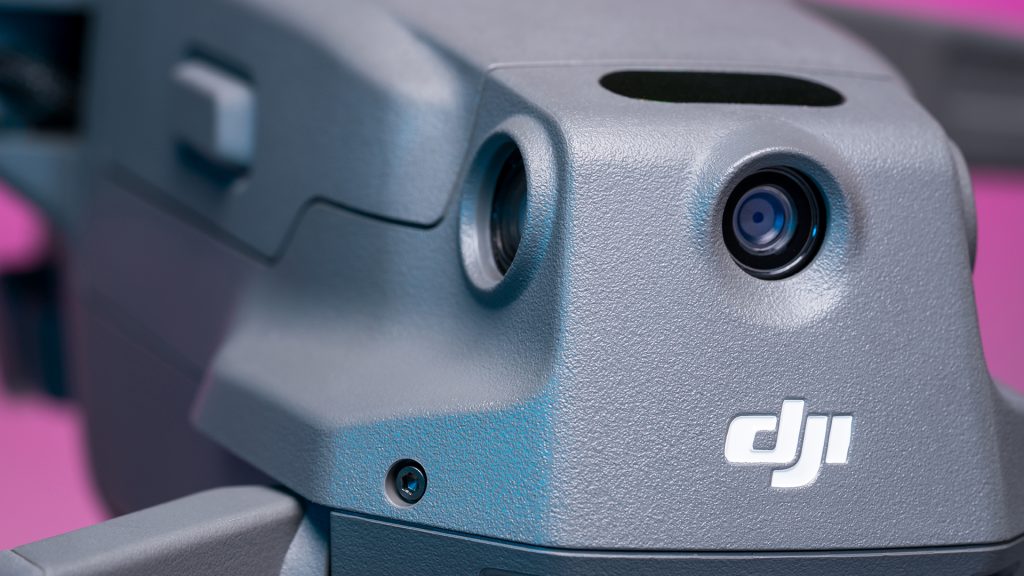
On to the sensors, which is another big upgrade on the Mavic 2 over previous models—In addition to the standard dual forward & downward vision positioning, the Mavic 2 steps up the game with omni-directional obstacle detection and throws ultrasonic downward positioning into the mix.
The new drone packs upwards infrared obstacle sensing from 0.1-8m along with left and right obstacle detection with vision sensors from 0.5-10m (80° horizontal FOV, 65° vertical FOV). Also included in the gambit of sensing is the downward infrared measurement from 0.5-11m – this was previously sonar and vision, now vision, infrared and ultrasonic— and backward dual vision detection sensors from 0.5-16m (60° horizontal FOV, 77° vertical FOV). The all-important forward dual vision detection sensors have precision measurement from 0.5-20m (40° horizontal FOV, 70° vertical FOV).
What does it all mean? While I refuse to call any drone “uncrashable”, DJI is doing their darndest to make the Mavic 2 hard enough to do so (at least in P-Mode).
So What is the Difference Between the Mavic 2 Pro and Mavic 2 Zoom?
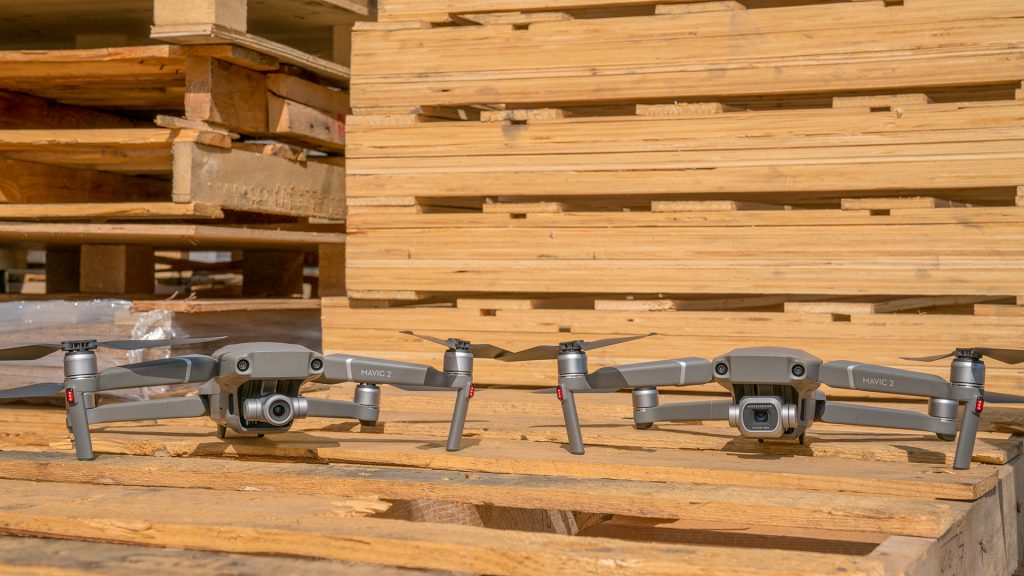
The main driving force behind the fan frenzy over a second-gen Mavic was the need for a full 1” sensor, which was present on the Phantom 4 Pro v2.0, Phantom 4 Pro, and even Phantom 4 Advanced.
The Mavic Pro, Mavic Pro Platinum, and Mavic Air have all come out since and went with the same 1/2.3” CMOS sensor, but finally, the drone gods have answered our prayers; a Mavic collapsible photography drone with a full 1” sensor in the Mavic 2 Pro. The Zoom still has that 1/2.3” sensor, with the optical 4x zoom. Aside from that, you are getting the same drone from a performance, intelligence, and portability standpoint for a $200 difference. In my humble opinion, it’s a no-brainer to jump up to the better camera for the extra coin and sacrifice the ability to zoom.
Is the Mavic 2 Pro the Best DJI Drone?
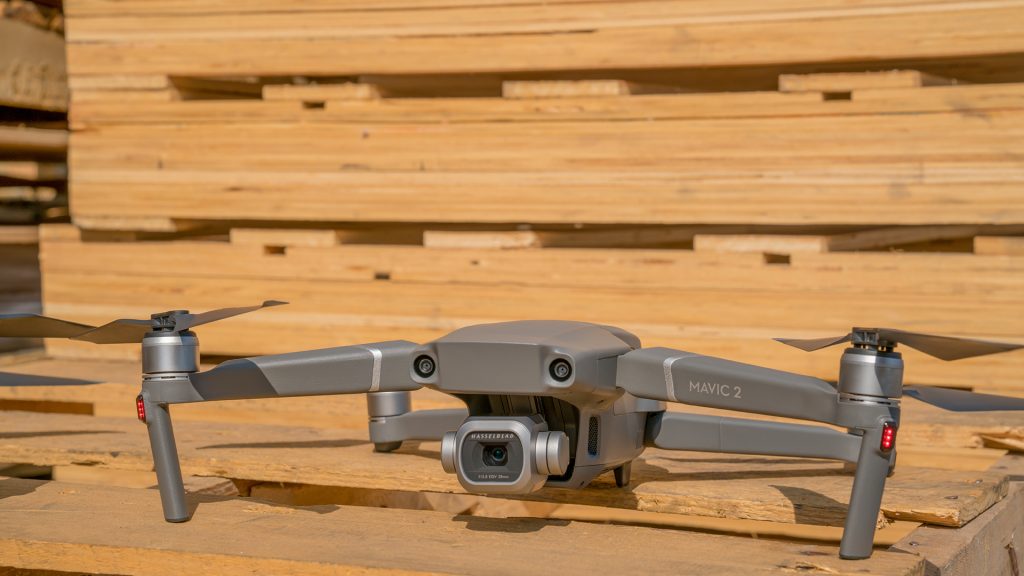
The Mavic 2 Pro is the best Mavic for photographers looking for that premium quality hands-down, but best (consumer) drone overall? There are a lot who will still say that the Phantom 4 Pro holds the belt in that ring, especially since the May 2018 update to V2.0 made it even more capable. The Mavic Pro 2 does have a few things it edges out the Phantom 4 Pro on, namely the compact portability of both the remote and the drone itself and the upwards obstacle-sensing, but this will have to be a question answered by the pilot for their use case.
For me, at the same price point in a heads-up comparison, I would spend my money on the Mavic Pro 2 over the Phantom 4 Pro. While I do value the increased frame rate, I think the freedom and portability of a collapsible drone and remote with these capabilities, plus the upwards obstacle detection is far more impactful over that extra 30fps. There is much more fun to be had with the latest release of the DJI Mavic 2 platform, and it will be interesting to see how the product line progresses.
Note, all prices and products are accurate at the time of article publication, although some may have changed or are no longer available.
Featured in this article:
DJI Mavic 2 Pro 4K Portable Drone w/Hasselblad Camera- $1,449
DJI Mavic 2 Zoom 4K Portable Drone w/Mechanical Zoom- $1,249
DJI Mavic Pro 4K Portable Drone- $849
DJI Mavic Air 4K Portable Drone- $799
DJI Phantom 4 Pro 4K Drone- $1,499
DJI Phantom 4 Advanced 4K Drone- $1,199

